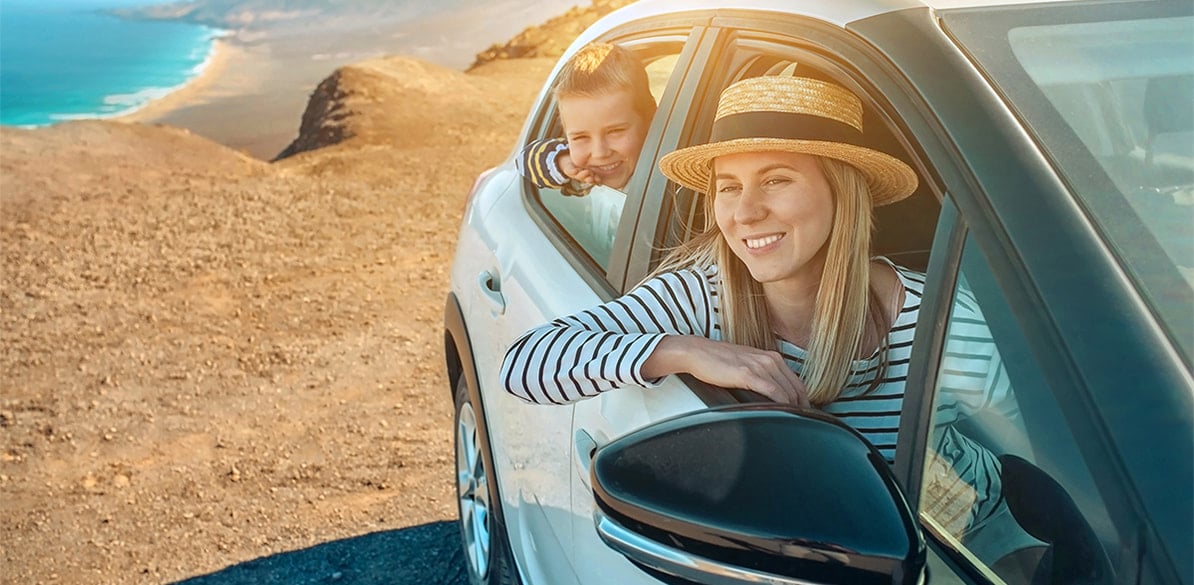Vehicle safety to protect children

Road Safety
Is a child seat the only system that protects children inside the car? The fact is that these days cars have all sorts of safety features to help protect young children that perhaps you hadn’t even thought about. Some of them are listed below with details of how they can help to guarantee greater safety in vehicles.
The child restraint system (CRS) is THE system when it comes to ensuring that your children travel safely in vehicles. In view of this, it is mandatory in most countries around the world, as you can see in the infographics we have prepared on CRS regulations in the United States (6 MB), Latin America and the Caribbean (3 MB) and the European Union (2 MB).
However, it is not the only system to protect children in cars. The United States National Highway Traffic Safety Administration (NHTSA) reminds us that there are other elements that can help when it comes to increasing the protection of our children.
Other security systems in the car
- Automatic door locks. One of parents’ biggest fears when driving is that their children will somehow manage to open the doors while the car is moving. To stop them accidentally opening the doors and also to reduce the risk of them being ejected in the event of a crash, this system is both practical and effective. Some of the more modern cars actually lock the doors automatically when the vehicle exceeds a certain speed, but if your car is not one of these, simply pressing a button can lock all the car doors. There are also special child safety systems to stop the doors from being opened from the inside.
- Locking windows. Electric windows seem to offer nothing but advantages. At least, that is until your children are in the car with you, especially if you don’t have a window lock. In the same way as the doors, you simply press a button to lock all the windows of your vehicle and thus avoid your child getting their hands or any other body part trapped. There is even an option for only locking the back windows.
- Rear-view mirrors. Like a second pair of eyes that helps you drive better, rear view mirrors can also help you to keep an eye on what’s going on in the back of the car, especially the central seat. You can cast your eyes back every so often and check what your child is doing by a simple movement of the head.
- Advanced frontal airbags: Today there are airbags capable of detecting the severity of an accident, the size of the passenger, whether they are wearing a seat belt or child seat, and the position of the seat. There are even systems capable of overruling the airbag’s deployment in the case of young children. Whatever the case, don’t forget that the safest place for children under the age of 12 is in the central back seat. If, for any of the permitted exceptions to this rule, the child has to travel in the front seat in a rear-facing child seat, you must always make sure that the airbag has been disabled.
- Side impact airbags: these protect passengers in the event of side impacts. Because they deploy rapidly, it is highly advisable for children to travel in the central back seat. Most vehicle manufacturers carry out safety tests to check the risk to children if the side airbags are activated. The NHTSA believes that the safety they offer is preferable to the potential consequences of not having them.
- Anti-pinch/auto-reverse windows that stop closing if they come across an obstacle. This avoids trapping little fingers, hands or arms when windows are closing. As soon as they encounter an obstacle, the mechanism stops.
- Interior trunk release: almost all vehicles on the market offer the possibility of opening the boot from the inside. This is particularly useful if anyone is trapped inside it after an accident.
- ISOFIX: This system greatly facilitates the installation of child seats. Some vehicles have this system installed in every passenger seat, while in others it is only available in certain seats. It avoids any mistakes being made when fitting a child restraint system.
